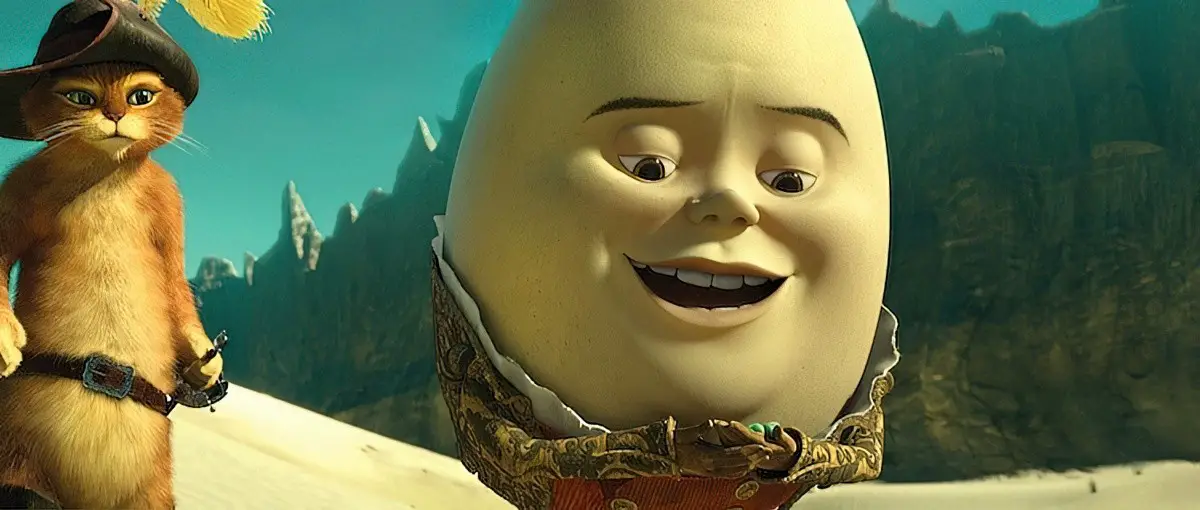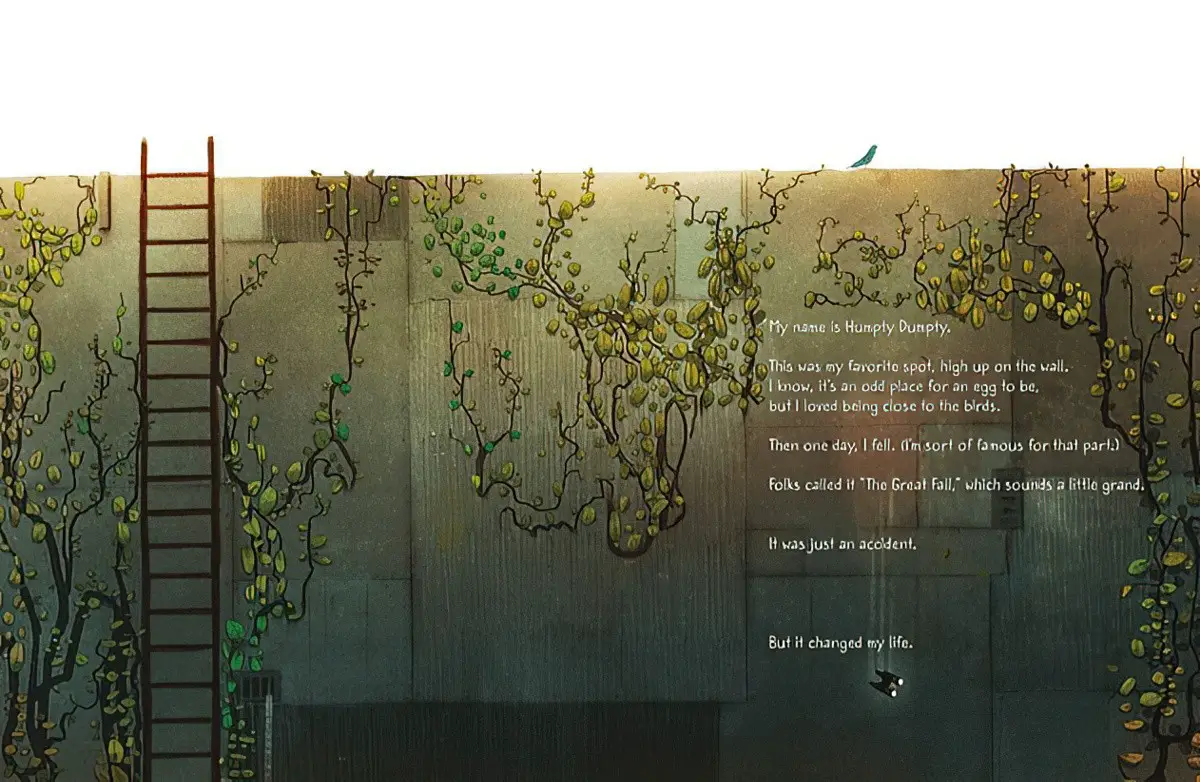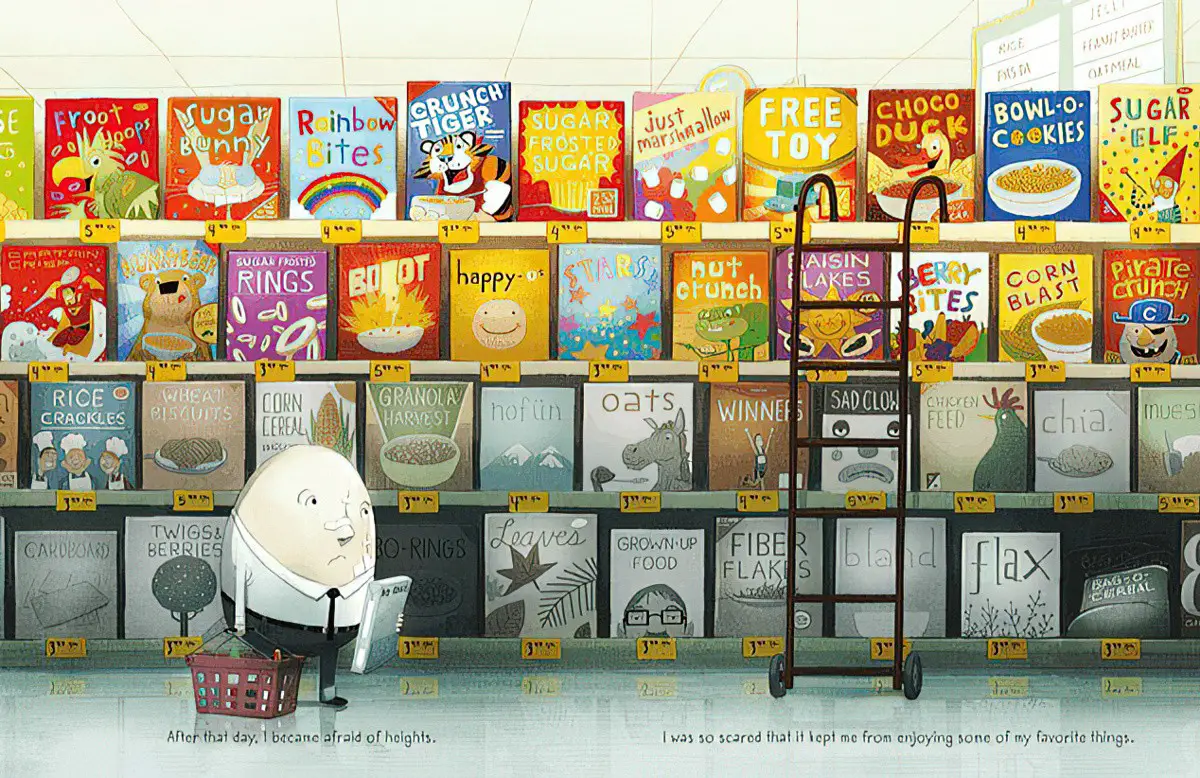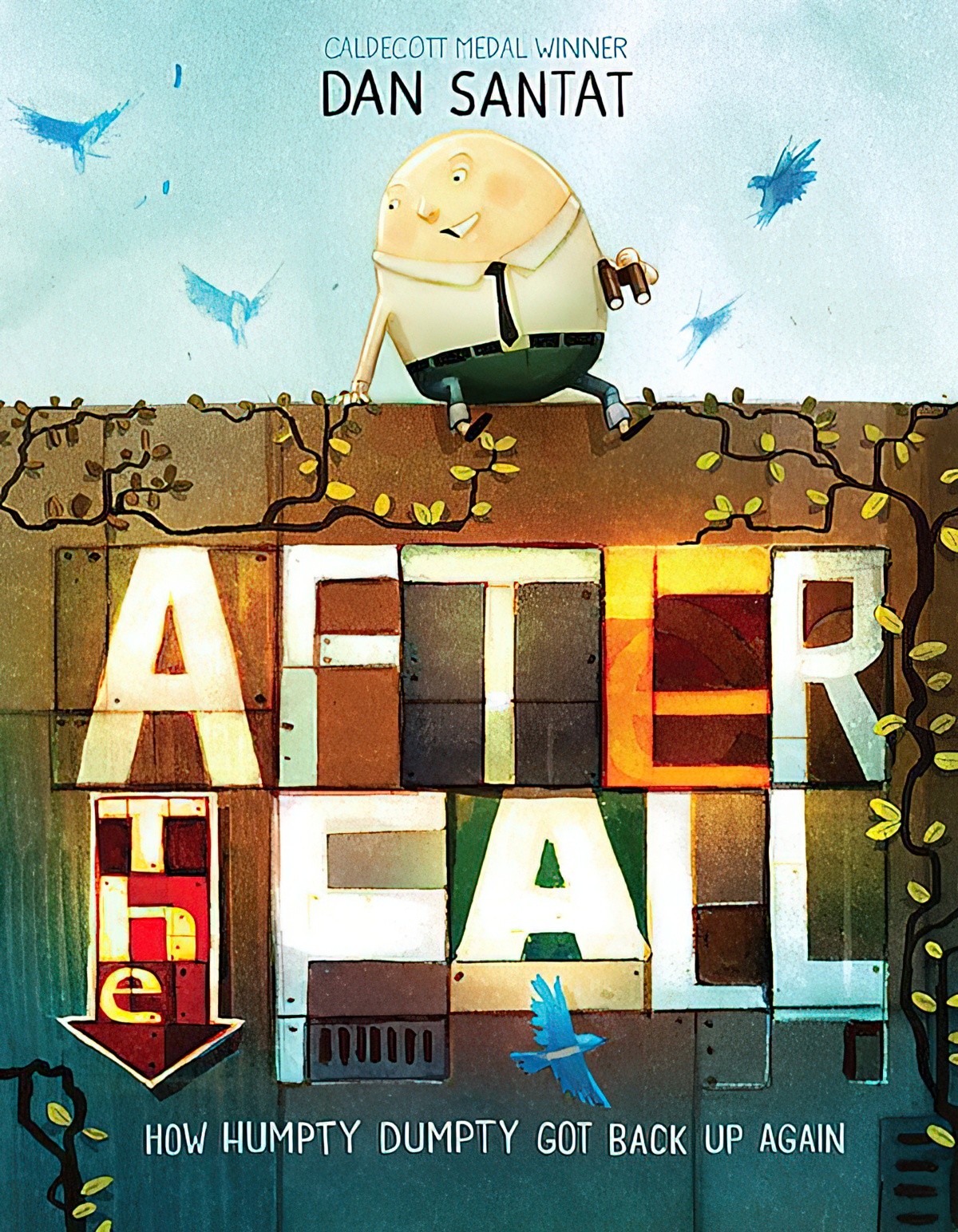Earlier this month I wrote a post on Teaching Kids How To Structure A Story. Today as case study let’s look at Dan Santat’s After The Fall, a metaphorical picture book with a very simple storyline and a strong message. Still, this isn’t a didactic (preachy) message. Why not? Because it’s metaphorical. If you have a strong message you sure can put it in your story, but you can’t tell readers directly — you have to allow them to put two and two together. (Hopefully they’ll make four.)
STORY STRUCTURE OF AFTER THE FALL
WHO IS THE MAIN CHARACTER?
The main character is a well-known figure from the world of nursery rhymes. Even if modern kids aren’t being read the classic nursery rhymes (due to there being so many other things to read), Humpty Dumpty will still be familiar because of things like the Shrek franchise.

WHAT DOES HUMPTY DUMPTY WANT?

Have you ever wondered WHY Humpty Dumpty wanted to sit on that wall? I hadn’t. I just figured he liked it up there.
To convert a short nursery rhyme into a full story, Dan Santat had to think a bit deeper. He knew there had to be a reason why Humpty Dumpty was sitting up on that wall. “I loved being close to the birds.” (Read: He wants to be close to birds.)
Heavy symbolism alert: Birds and flight are used often in literature to symbolise freedom (along with other things). Here they symbolise freedom from fears and anxieties. (Read: He wants to be free, like birds.)
OPPONENT/MONSTER/BADDIE/ENEMY/FRENEMY
Normally, the general rule is that the main character’s main opponent can’t be themselves. This doesn’t make for a great dramatic arc, mostly. This is true for longer stories.
But it works here for two reasons:
- Very short works like picture books can break a few rules because they don’t have the problem of a saggy, boring middle.
- Humpty’s anxiety is so strong that it really is a formidable opponent. (I just realised I wrote that sentence as if Anxiety is an opponent in its own right.) Dan Santat has talked widely about the very personal story behind this picture book, like at Publisher’s Weekly.
WHAT’S THE PLAN?
Humpty’s plan is to avoid the scary thing. That’s pretty common in main characters, especially when those characters are pretty ordinary people just like you and me. They don’t have any reason to believe they can overcome adversity, so they sit around hoping they won’t have to. We can identify with this.
But fictional characters who plan ‘to do nothing and hope it goes away’… well, that NEVER happens.
Otherwise there’s no story. Well, maybe there’s an ironic, shaggy dog kind of a gag:
Humpty Dumpty fell off a wall.
He decided not to sit on walls.
So he didn’t.
The End
(Comedic arc is different from dramatic arc. We’re talking about dramatic arc here, folks.)
Humpty’s world becomes very grey and dull. The supermarket/cereal aisle scene shows that. But Dan Santat doesn’t dwell on that period of Humpty’s life. One double spread is enough to get the message across. Notice how the cereal boxes are bright and colourful, but Humpty’s state of mind makes everything he sees (at his eye level) dull and grey. Even the titles of the cereals look rubbish down low. This totally benign cereal display reminds him of the wall. Ladders, and all that. (Notice he’s looking at the ladder and frowning.) This picture says so much.

Next, Humpty catches sight of a paper plane so he decides to make those because it’s kind of like being close to birds again, even though he is anxious about getting paper cuts (and does get paper cuts). This isn’t as good as being up there with the birds, but it’s a little bit like that.
All of this is a way of saying: You might not be able to do the REALLY scary thing, but if you do something a little scary you can build on that and eventually the scary things seem less scary.
BIG STRUGGLE
The Big Battle for Humpty is when he tackles that wall again. It’s all in the hands — there’s a close up of the hand, reaching up to grasp onto the higher rung.
WHAT DOES THE CHARACTER LEARN?
When he’s up on that wall he realises it’s awesome being with those birds again.
HOW WILL LIFE BE DIFFERENT FROM NOW ON?
Humpty has overcome his fear of falling from the wall, and feels a huge weight lifted from his life.
Is he up there flying with the birds? There are three small white dots in the sky and any one of them could be Humpty flying.

